Name Intrepid Laid down 19 December 1962 Decommissioned 31 August 1999 Construction started 19 December 1962 Length 160 m Builder John Brown & Company | Ordered 1 May 1962 Commissioned 11 March 1967 Launched 25 June 1964 Draft 6.25 m | |
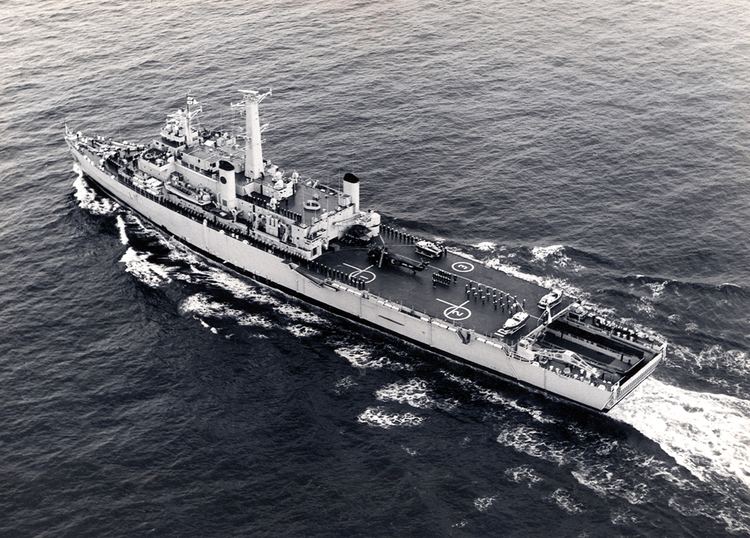 | ||
HMS Intrepid (L11) was one of two Fearless-class amphibious warfare ships of the Royal Navy. A Landing Platform Dock (LPD), she served from 1967 until 1999. Based in HM Naval Base, Devonport, Plymouth, Devon and HM Naval Base Portsmouth, she saw service around the world over her 32-year life.
Contents
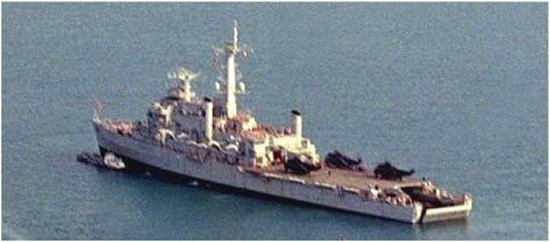
In the process of being decommissioned for sale, she was rapidly returned to service to sail as part of the British operation to retake the Falkland Islands after the Argentine invasion in 1982. She landed troops in amphibious assaults on the Islands and the Argentine surrender was signed on her deck at the conclusion of the Falklands War.
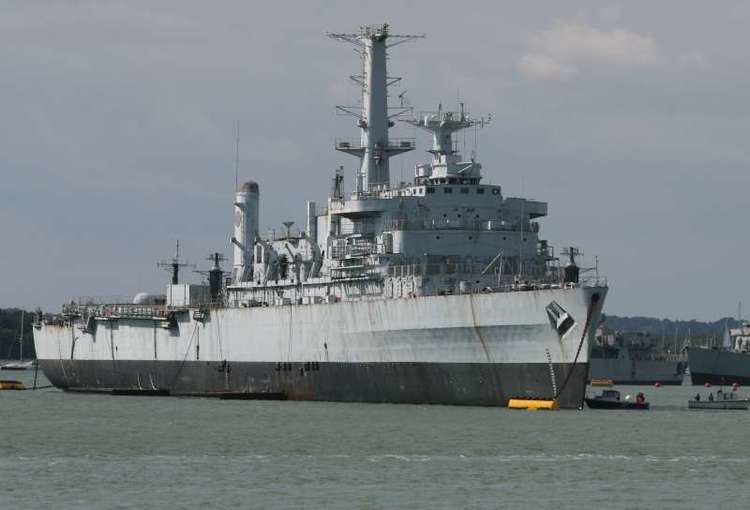
Role
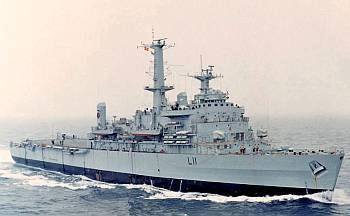
The LPDs provided support to a Royal Marines amphibious assault force and provided a platform for the Headquarters capability prior to, and during, the assault phase.
Service
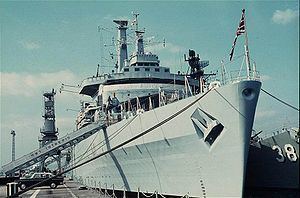
Intrepid was the second of her class of purpose built LPDs used by Royal Navy. She was built in Clydebank, West Dunbartonshire, at the John Brown & Company yard and was launched in 1964 before undergoing trials and commissioning in 1967. She was the last ship built by John Brown & Co for the Royal Navy.
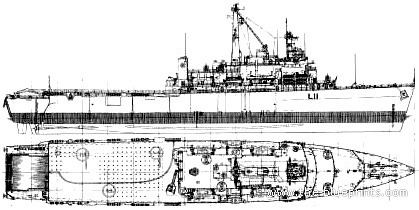
Intrepid became the first Royal Navy warship to be fitted with satellite communication equipment in 1969. As a result of defence cuts, Intrepid went into reserve in 1976, being brought back into active service in 1979 to allow Fearless to be refitted.
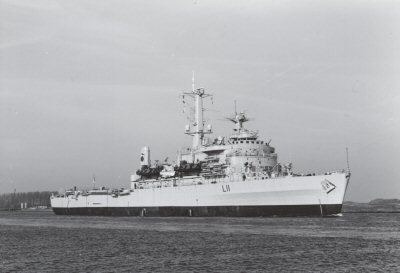
It was announced in 1981 that the two LPDs were to be deleted, with Intrepid undergoing decommissioning in 1982 at the outbreak of the Falklands War. After decommissioning, the Royal Navy was due to sell Intrepid to Argentina. However, Intrepid was brought back into commission, with her ship's company recalled by Commander Bryn Telfer (the Executive Officer), and Malcolm MacLeod, the crew gladly returned to form part of the task group committed to Operation Corporate, the British effort to recapture the islands. Intrepid was commanded by Captain Peter Dingemans.
With elements of 3 Commando Brigade embarked, Intrepid took part in the amphibious landings at San Carlos Water. HMS Intrepid was under attack in San Carlos Water on 25 May 1982, with a few fatalities, mainly Royal Marines. Nordic Ferry was also under attack. She came under heavy air attack once again during the operation, and was the main participant in the landings at Bluff Cove on 6 June. Margaret Thatcher and Sandy Woodward commended the efforts of the ships involved in the San Carlos attacks.
She Intrepid would be the last ship to arrive, the last piece in the jigsaw, and so all the timings depended on her.
As well as being one of the warships used for imprisoning the Argentinian prisoners of war, the surrender ending the Falklands conflict was signed on Intrepid's deck.
Intrepid was refitted at Devonport Royal Dockyard between January 1984 and June 1985, with two Sea Cat launchers removed, with twin 30 mm anti-aircraft mounts and two single 20 mm cannon added. From June 1985 until 1990 she supported the sea training phase of initial officer training, undertaken at Britannia Royal Naval College, as part of the Dartmouth Training Squadron.
During the early years of their service, Intrepid and her sister ship Fearless carried a number of soldiers of the regular British Army as part of their fixed crew. This happened because in the late 1960s and very early 1970s, the strength of the Royal Marines had been cut severely by the then Labour government (Harold Wilson) and the Marines were unable to fulfill a number of the amphibious liaison posts on board the ships. In the case of Intrepid, the army crew included a signal troop (661 Signal Troop, Royal Signals), a detachment of Royal Engineers (beach clearance duties), a small team of drivers from the Royal Corps of Transport (vehicle deck handling) and REME recovery mechanics who operated the BARV - Beach Amphibious Recovery Vehicle. This was a tracked recovery vehicle, based on a Second World War Centurion Tank chassis, with built-up sides. Its function was to recover drowned vehicles during a beach assault.
The Army element of the crew of Intrepid was in place from its commissioning in 1967, to December 1973, by which time the strength of the Royal Marines had been substantially improved and they were then able to fulfill all the above posts themselves.
Decommissioned
Intrepid was placed in reserve status late in 1990, when Fearless completed an extensive refit. Intrepid was in poor physical condition by this time, which prevented a similar upgrade, and was laid up at HM Naval Base Portsmouth. Intrepid was used as a source of spares for Fearless. She was decommissioned in 1999 and awaited her disposal, by scrapping, in Fareham Creek, Hampshire.
On 12 February 2007, the MoD announced that HMS Intrepid was to be recycled at a British facility. Leavesley International was selected as the preferred bidder, pending licence acquisition. The contract aimed to ensure that the ship was disposed of responsibly, and in full compliance with international environmental legislation.
Having received the required planning permission and environmental licences for disposal, Intrepid left Portsmouth for her final journey to Liverpool on 13 September 2008. Having been previously suggested as potential diving site on the south coast, various veterans of the Falklands War started a petition on the 10 Downing Street website to preserve the ship as a memorial to the conflict. But in late January 2009, the Daily Mail published an article showing the half demolished ship in Liverpool Docks, which was reported to be on target to be 96% recycled.
Replacement LPDs were ordered during the 1990s with HMS Albion being commissioned in 2003.
